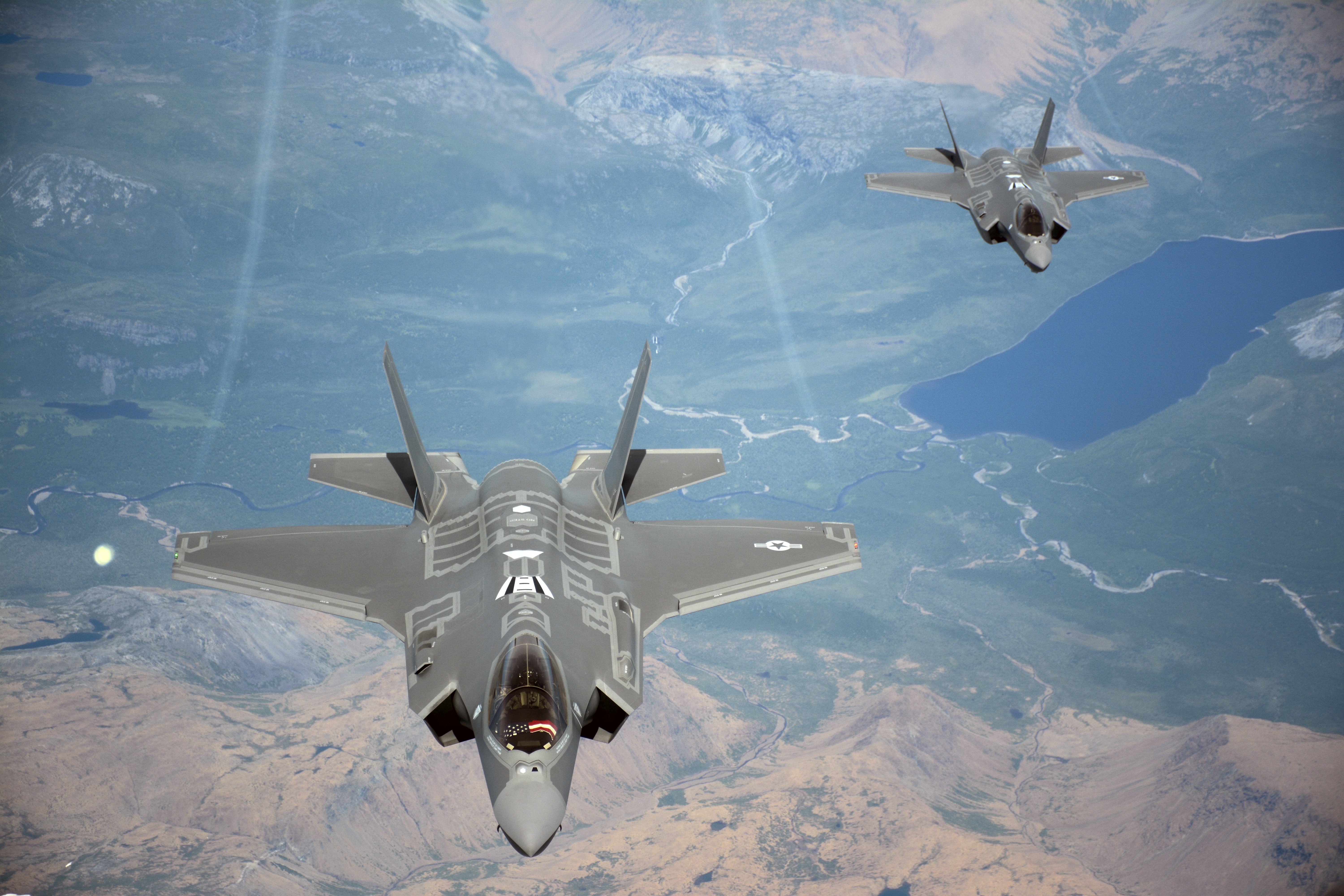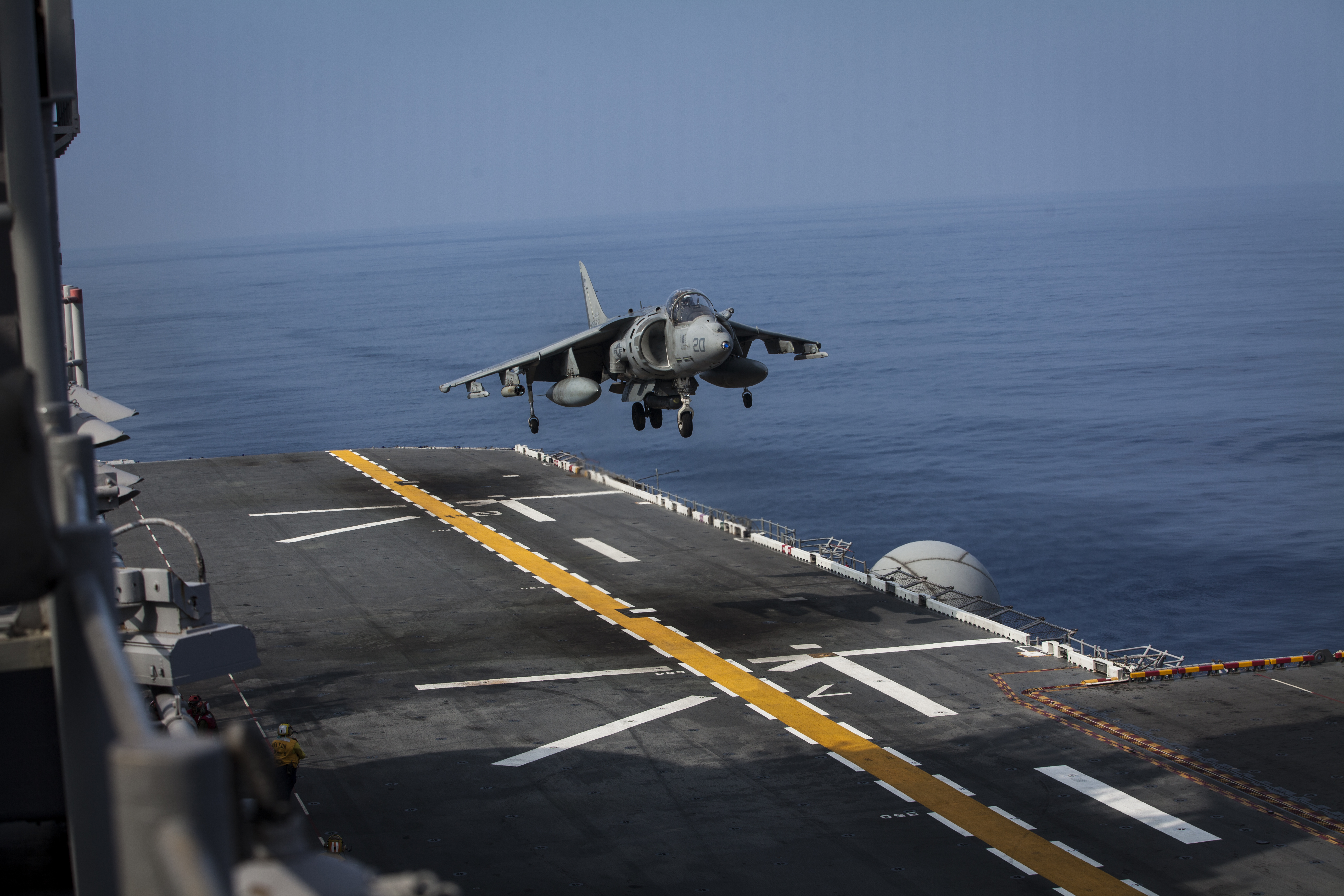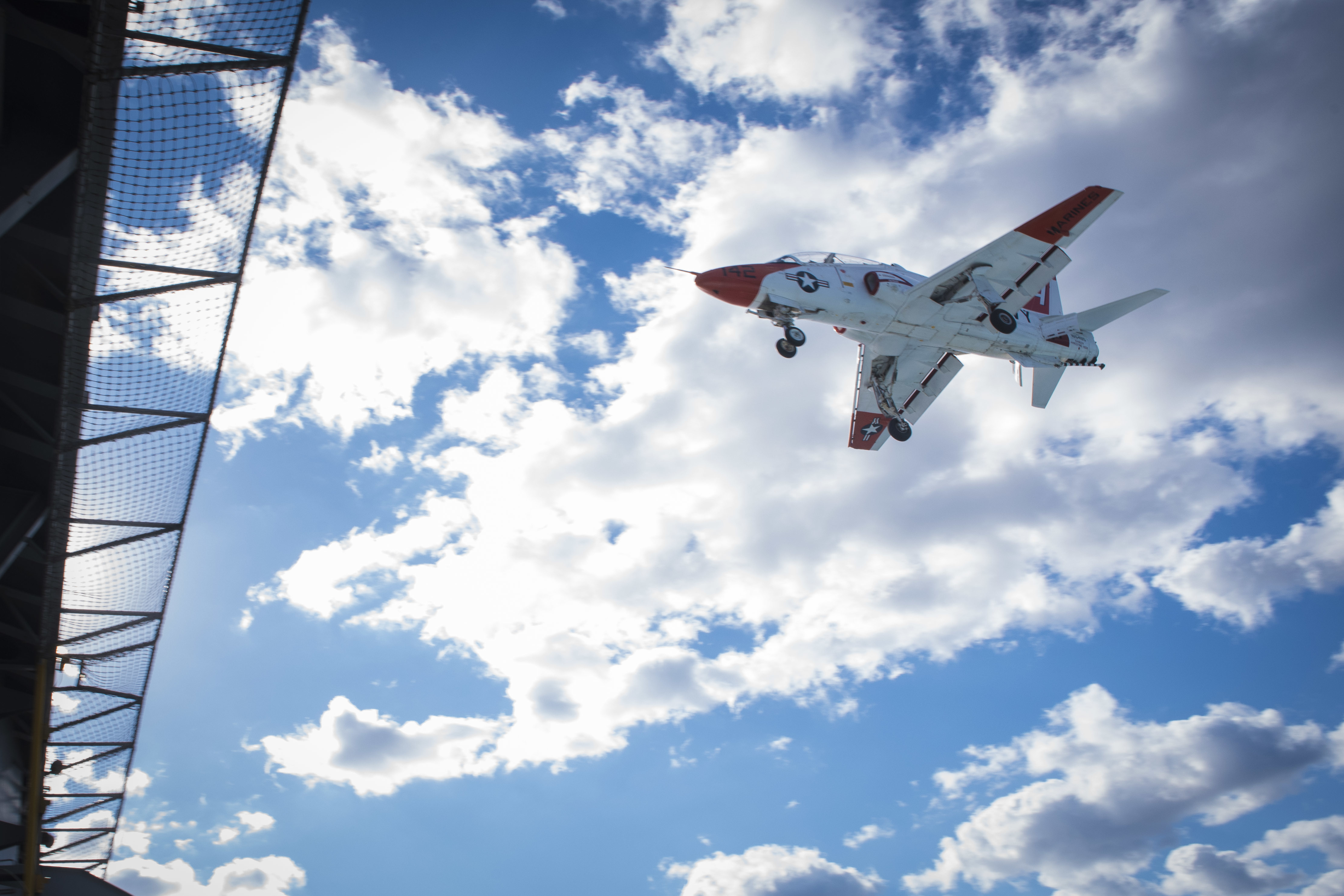
WASHINGTON, D.C. — The armed services are still unsure why Navy and Air Force pilots are struggling with their Onboard Oxygen Generation System (OBOGS) while the Marine Corps – which uses the exact same systems – has had no problems, the Marines’ top aviator told reporters.
Not a single naval flight student has flown since late March, after a spike in troubles with the T-45C Goshawk trainer aircraft that led to hypoxia, when the pilot receives either a lack of oxygen or contaminated oxygen. And the Air Force halted F-35A Joint Strike Fighter operations out of Luke Air Force Base on June 9 after five hypoxia incidents have been reported since early May.
Lt. Gen. Jon Davis, deputy commandant of the Marine Corps for aviation, told reporters after a Senate Armed Services seapower subcommittee hearing on Tuesday that the Marine Corps has had zero instances of hypoxia with its F-35Bs or with its AV-8B Harriers, which use the same OBOGS as the T-45C.
“Nothing on the B right now, so we’re not suspending flight ops. We’re watching very closely what’s going on in the Air Force, understanding – almost like the same OBOGS onboard oxygen generating system that’s in the T-45 is in the Harrier, we have no problems in the Harrier. So it’s one of those things [Naval Air Systems Command] is looking at; is it because we’re pulling air from a different part of the motor? So looking at that, understanding what the differences are. But we haven’t had any problems with OBOGS.”
Asked by USNI News if the Marines maintain or operate their OBOGS differently than their sister services, Davis replied, “we are looking at all that.” He noted that not all Air Force F-35A squadrons have experienced problems, just those at Luke AFB, so it would take time to understand what is creating that situation.

Further adding to the disparity between the Marine Corps’ experiences and the Navy’s is that the Marines’ legacy F/A-18A-D Hornets have had relatively few problems with their Environmental Control Systems that control cockpit pressure, whereas the Navy has seen higher rates of decompression sickness as a result of ECS failures. Decompression sickness from ECS problems and hypoxia from OBOGS problems are collectively referred to as “physiological episodes” and are both being investigated by Naval Air Systems Command.
“Inside some of the like airplanes, F-18s, legacy F-18s, we have a little bit less incident of the physiological events than our Navy brothers that are flying the same airplane,” Davis said.
“So you go, why? We don’t know why. We have some, but not as much” physiological episodes on the Hornet, he added.
Davis cautioned against taking drastic measures in light of these physiological episodes in the Navy, Marine Corps and Air Force, and across all types of tactical aircraft in the naval aviation inventory.
“Here’s what I do know, I was thinking about this on the way over here: I went from liquid oxygen as a young officer to OBOGS, and I’m like, this is great. Think about it: you have a bottle you have to manage, and if the bottle runs out and you’re in a trans-Atlantic, trans-Pac, you have to drop down below 2,000 feet because you’re out of oxygen. Now it’s generated on the airplane,” Davis said.
“What I do know is it’s been working well for over 20 years in the T-45 and the F-18. It’s working well in the Harrier now. It’s working well in the F-35B now. So let’s not throw the baby out with the bath water. … Let’s figure out what’s happening here, take our time, get it right.”
Naval Air Systems Command (NAVAIR) is conducting a PE Review on behalf of the Navy and Marine Corps, but NAVAIR Commander Vice Adm. Paul Grosklags said in the hearing that “we’re not doing well on the diagnosis” of the problem. He noted that NAVAIR is simultaneously looking for the root cause and pursuing 10 to 12 “alerting and protective measures” that would make it safe for students to return to the T-45 even without understanding why the OBOGS is failing.
“It is our plan that once we are comfortable that we’ve got those individual items all in place for every single aircraft and air crew down at CNATRA (Chief of Naval Air Training), that is the point where we will consider resuming the training syllabus,” Grosklags told the subcommittee, adding that he hoped that would happen in a matter of weeks rather than months but that a bit more testing of some of the items was still needed.

Finding the root cause of the problem has been a much less successful endeavor so far, though.
“To date we have been unable to find any smoking guns. For T-45s specifically … to date we have not been able to discover a toxin or a contaminant in the breathing gas despite our testing,” the vice admiral said.
“We have taken several of the aircraft from CNATRA, from the training squadron, brought them up to [Naval Air Station Patuxent River] and we have torn some of them apart, to the extent that we took every component in that gas path, that breathing gas path if you will, on the aircraft, starting with the engine and going to the entire system, inspecting all the piping in between, all the way up to the mask and the vest that the aircrew wear. We’ve subjected each one of those individual components to extremes of testing, extremes of environmental conditions in excess of what we would ever expect to see in the aircraft, and we still have not been able to find what we would consider a proximate cause of contamination or something being released into that gas path. We are also doing testing at the system level, we are flying entire aircraft – again, these are aircraft that had issues down at CNATRA – we’re flying entire aircraft with additional instrumentation on the aircraft trying to detect some in-flight real-time. To date we have not been able to find that root cause.”
Instructor pilots have been allowed to fly the T-45s without the OBOGS, relying instead on ambient air, to maintain their qualifications on the aircraft, but they’ve been restricted to less than 5,000 feet elevation and less than 2 Gs of force. Grosklags said about 25 pilots a month are being delayed leaving flight school and going to the Fleet Replacement Squadron, or about 75 total by the end of this month.
Davis said about a third of those pilots are Marine Corps pilots, and if the problem isn’t addressed by September the Marines will face a serious personnel issue.
“It’s a little bit of a perfect storm for the Marine Corps” because the service already had only half the F-18 captains it needed due to previous under-production of pilots. The Hornet pilots that do exist are in large numbers trying to transfer to the F-35B or C through the Transition Conversion Board process, Davis said, and while the Marines do need more F-35 pilots, “I’ve got to keep Harrier pilots and Hornet pilots flying Harriers and Hornets because I don’t have enough of them” either.





